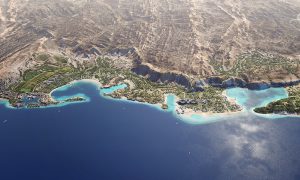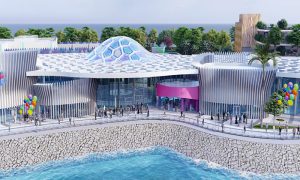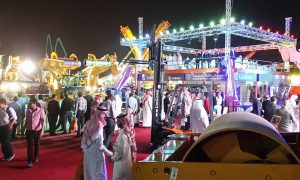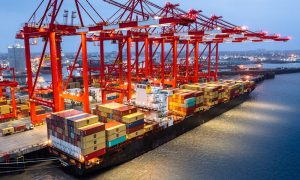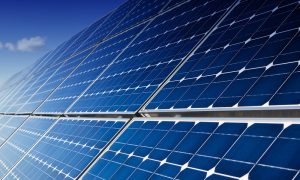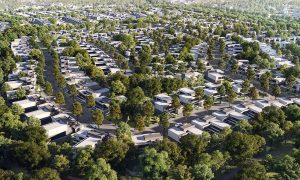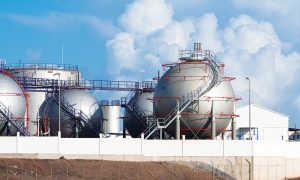Saudi’s Kingdom Tower: How world’s tallest building will benefit Jeddah
Mounib Hammoud of the Jeddah Economic Company discusses the impact of the 1km tower

From King Kong climbing the Empire State Building to Tom Cruise scaling the Burj Khalifa, Hollywood’s most popular scenes have often involved iconic buildings that soar above city skylines. It’s easy to see the grip that the world’s tallest buildings have on public imagination, and it’s certainly not difficult to see how they can put a city on the world map as a force to be reckoned with.
Soon to outrank Dubai’s Burj Khalifa as the world’s tallest building is the under-construction Kingdom Tower in Saudi Arabia. Crossing the 1km mark, the tower will set a new precedent for the skyscrapers of the future as it rises high above the coastal city of Jeddah.
Last month, Finland’s KONE announced that it had begun installing elevators in the tower, which is currently under construction and slated for completion in 2018. The project is being built at a cost of $1.2 billion and has the backing of Saudi billionaire Prince Alwaleed bin Talal. It is being developed by the Jeddah Economic Company (JEC), which was established in 2009 to develop the 5.3 million sqm Kingdom City, of which the Kingdom Tower will be the centrepiece. JEC’s principal financiers are the Kingdom Holding Company, Abrar Holding Company, Qila’a Jeddah Company and the primary contractor, Saudi Binladin Group.
While it’s probably nice to beat the world record held by neighbouring metropolis Dubai, what will the new tower really mean for the city of Jeddah? The project will have “a direct impact on the quality of life in Jeddah”, says Mounib Hammoud, CEO of JEC, in an interview with Big Project ME.
He points out that besides shattering world records, the Kingdom Tower and City will significantly help boost Jeddah’s economy. “It will be a major source of job opportunities for Saudis. We expect 50,000 jobs on offer as we open shop for phase one of the project.” Job creation will be driven by the hospitality, retail, leisure and entertainment facilities coming up within the project, he explains.
The Kingdom Tower will feature a 200-key Four Seasons Hotel, 121 Four Seasons serviced apartments, 61 residential floors, 318 apartments and the highest observatory space in the world. The overall project, comprising Tower and City, is expected to house 200,000 residents at the end of the first two phases.
Apart from the economic benefits, the Kingdom Tower will cement the place of Jeddah as a major metropolitan hub in the region alongside cities like Dubai and Beirut, Hammoud adds.
When asked if he expects the tower to boost tourism in the city, Hammoud points out that Jeddah is already a tourist hotspot in the Kingdom. “Jeddah is the prime tourist destination in the Kingdom. It’s the gateway to Islam, so 1.3 billion Muslims will at least once in a lifetime have to visit Makkah and Medina, and they have to pass through Jeddah.”
Nevertheless, he does expect the project to usher in more visitors to the city, as the government also looks at investing in public transport infrastructure which will upgrade Jeddah’s tourism offering.
The city’s position as a tourism and industrial hub has also helped cushion it from the free fall of oil prices – a factor that has been raising concern in the rest of the region. “Jeddah is the city which is least dependent on oil in the Kingdom because this is a tourism destination. It has a tourism economy, it has a religious visitation economy. It is the first business hub in the Kingdom. We have 40% of the largest trading companies in Jeddah.”
Construction progress on the Kingdom Tower has reached the 14th storey, and Hammoud expects the tower to cross 60 levels by the end of the year. Total construction area on the 170-storey tower is 465,000sqm, while total gross floor area will be 245,000sqm. The building is cast in place with 85 kPa cement and is being built with 105m deep piles with a diameter of 1.8m.
Meanwhile, on Kingdom City, the master plan is complete and the design of the infrastructure will be complete soon, with JEC currently tendering for earthmoving on the mega-project.
While the workforce on-site is currently centred on the tower, worker numbers are expected to grow once earthmoving starts on the surrounding development. Constructing the world’s tallest building is obviously no mean feat, and safety considerations for workers on-site are paramount, Hammoud says.
“We have very, very strict health and safety regulations and we have Dar Al Handasa, our engineers, who supervise works on-site,” he notes, adding that HSE is also strictly looked after by the EC Harris-MACE joint venture providing project management services on the site. “The first order on any agenda of any meeting is health and safety.”
Despite the precautions, he acknowledges that building the tower remains a tall order. However, the chief executive is confident his team is up to the task.
“There is no project without challenges. Construction, facade, hoisting, sustainability, fire safety, you name it. But I think with the experience and ingenuity of the designers, the consultants, the contractors and my team, nothing will be impossible. We will overcome all challenges and all difficulties.”
Soaring towards efficiency
Sustainability is a key driver for the Kingdom Tower development, and one way the project will look at conserving energy will be through its elevators. The tower will be equipped with 57 KONE elevators and eight escalators on the project, and pre-installation activities are already underway on the site. The elevators will be able to travel at a speed of over 10m/s to reach the highest liveable floor in 52 seconds. Additionally, the high-speed elevators will rise 660m to the observation deck, making it the world’s highest elevator rise.
KONE Areeco, the Finnish firm’s Saudi joint venture, is currently working on the fitting of the elevator system’s guiderails, which is expected to begin towards the end of this year. The installation of the guiderails, as well as the eventual installation of the elevator cars, will then progress as the Kingdom Tower’s central structure rises over the coming years.
The elevators will be built using KONE’s UltraRope, which has a carbon fibre core and special high-friction coating. The UltraRope, one third the weight of conventional steel ropes, will consume much less power and make the elevators in the tower considerably lighter.
UltraRope elevators offer a 60% reduction in moving masses and 15% reduction in energy consumption for an elevator with a travel height of 500m. For an elevator with a travel height of 800m, moving masses can be reduced by as much as 90% and energy use by 45%, according to KONE’s website.

